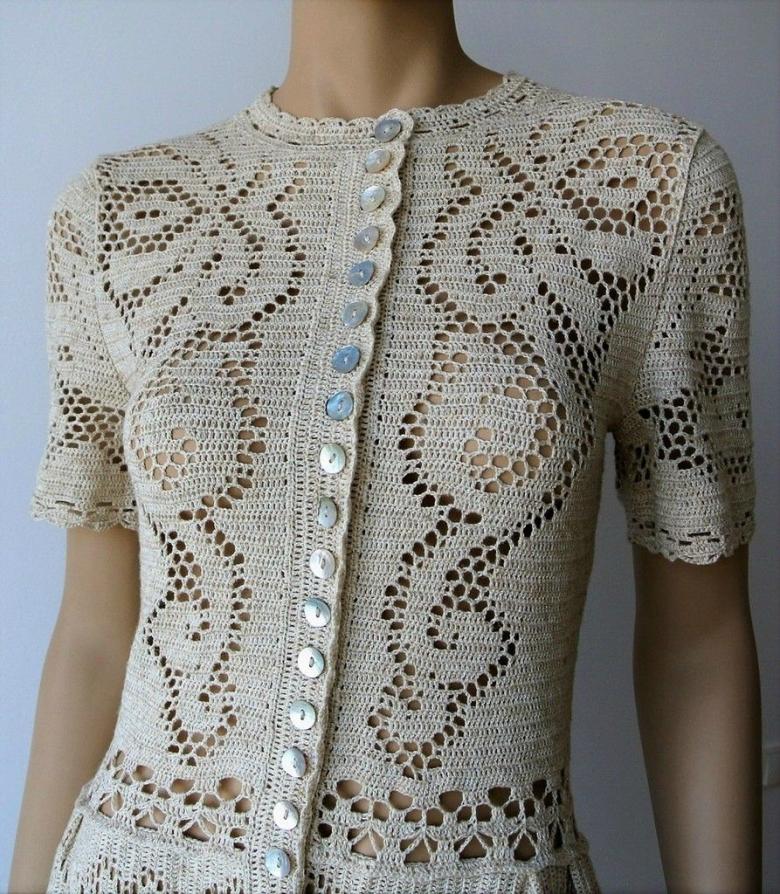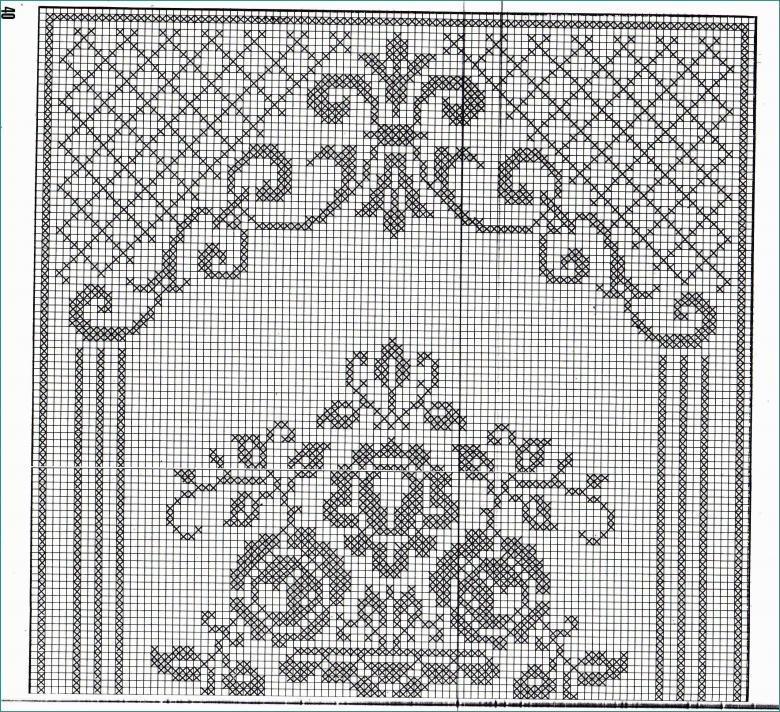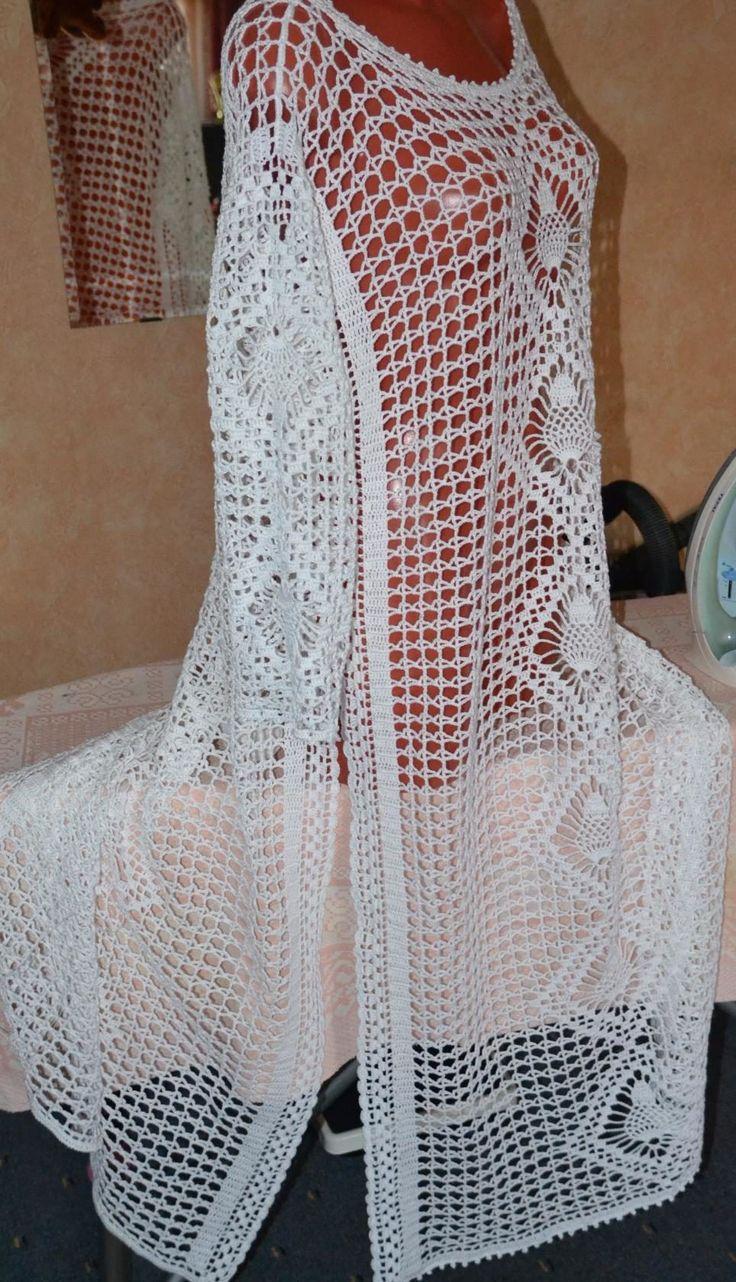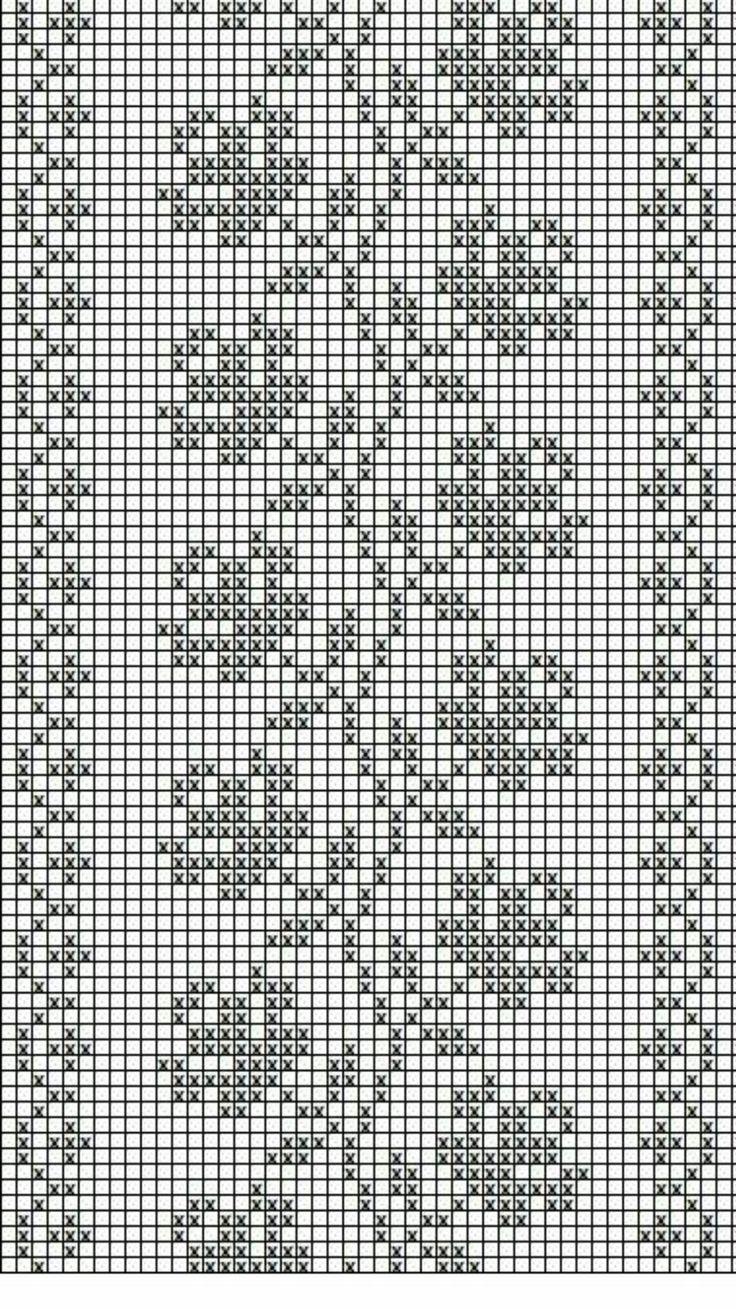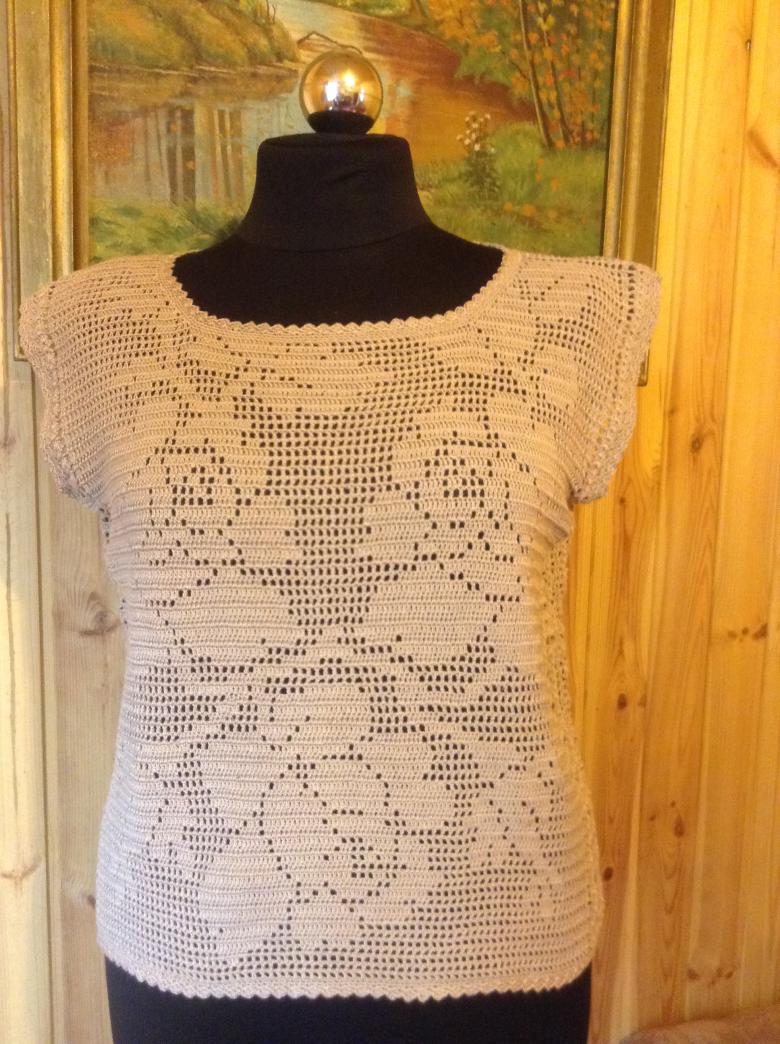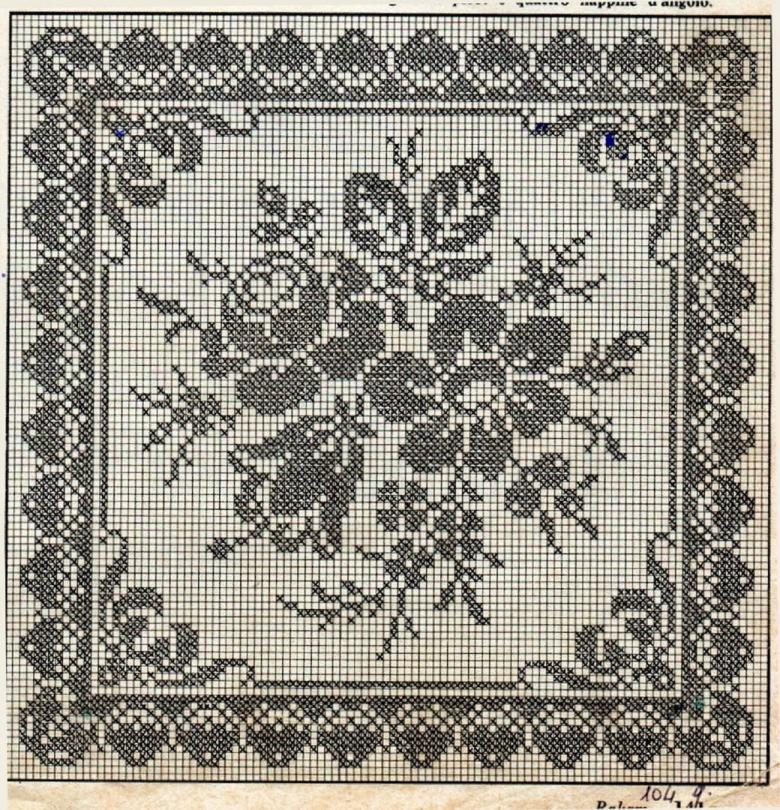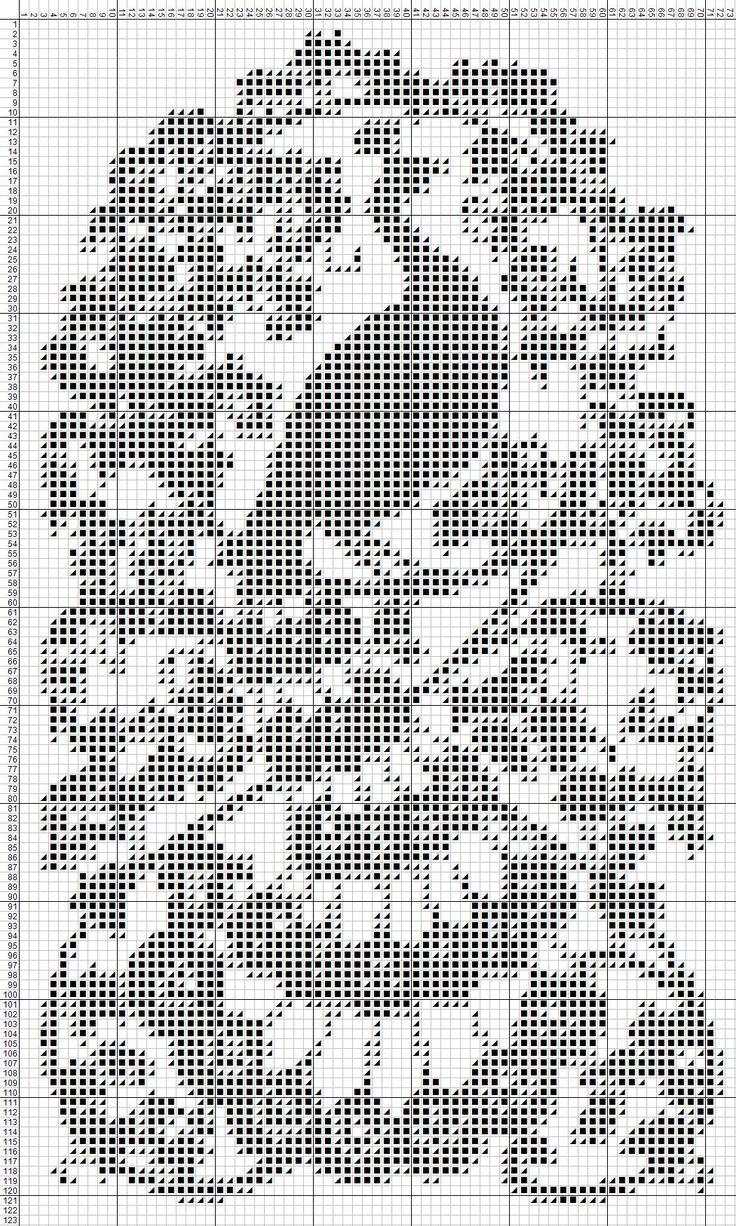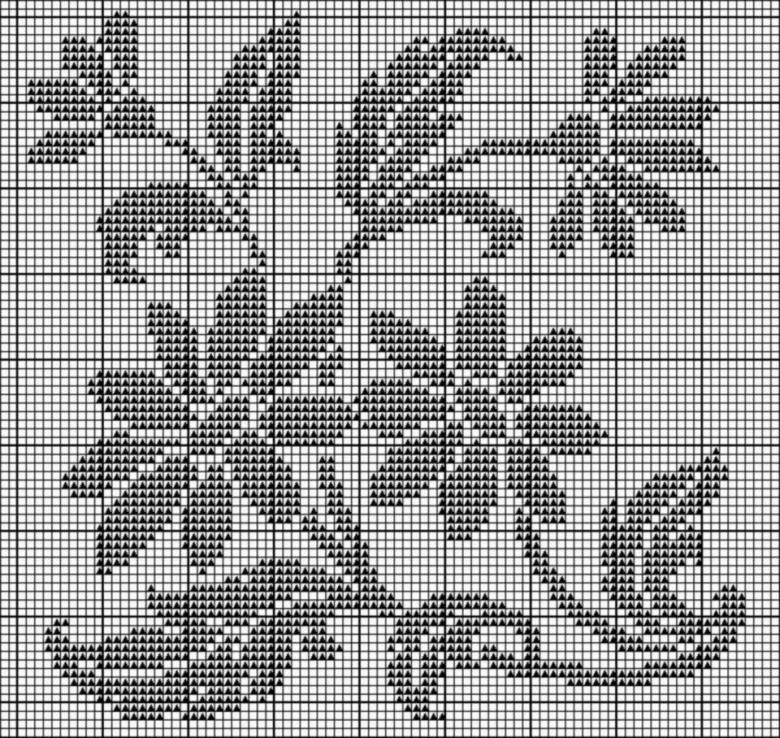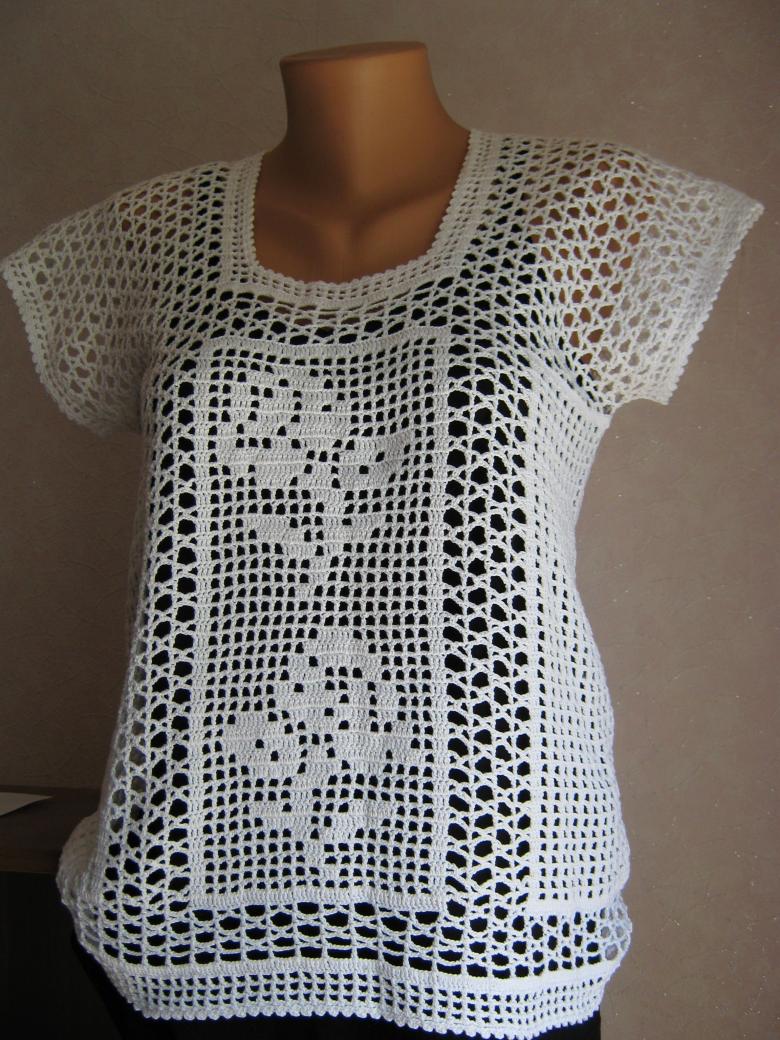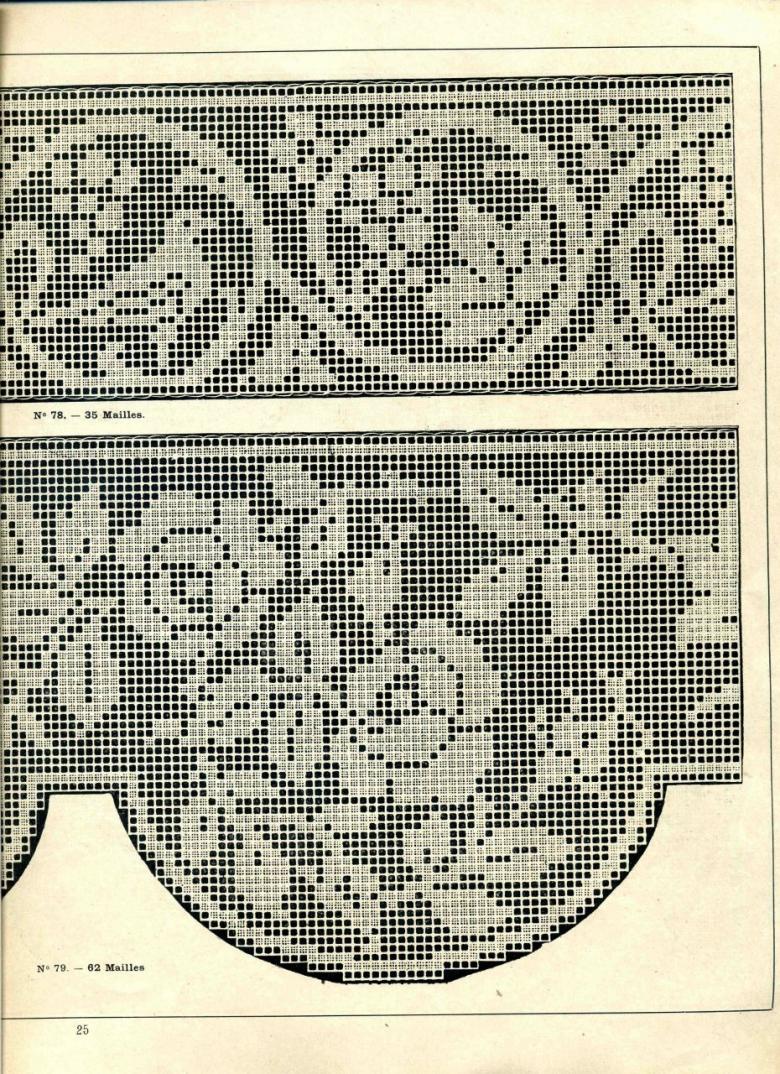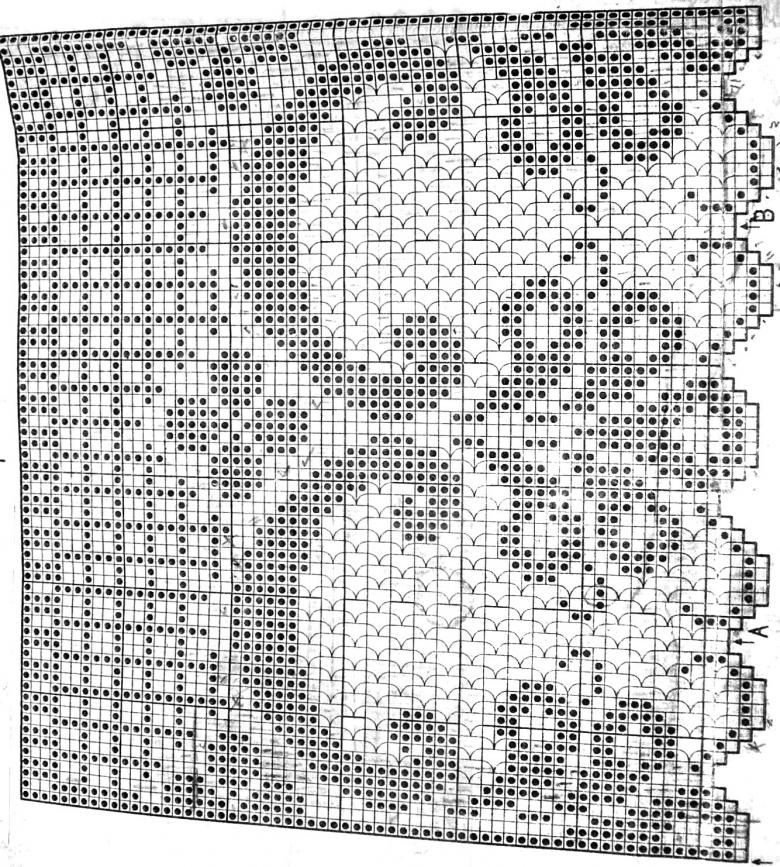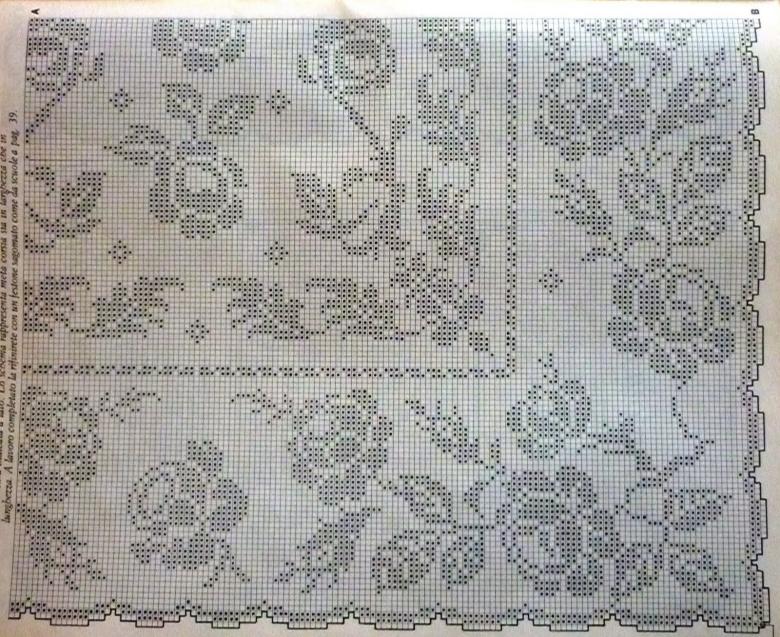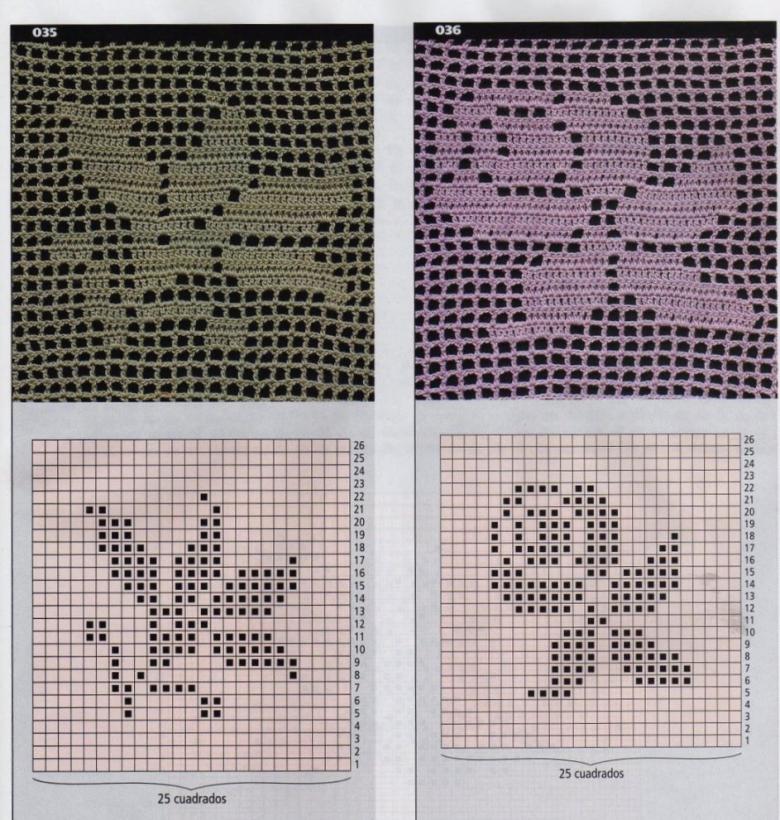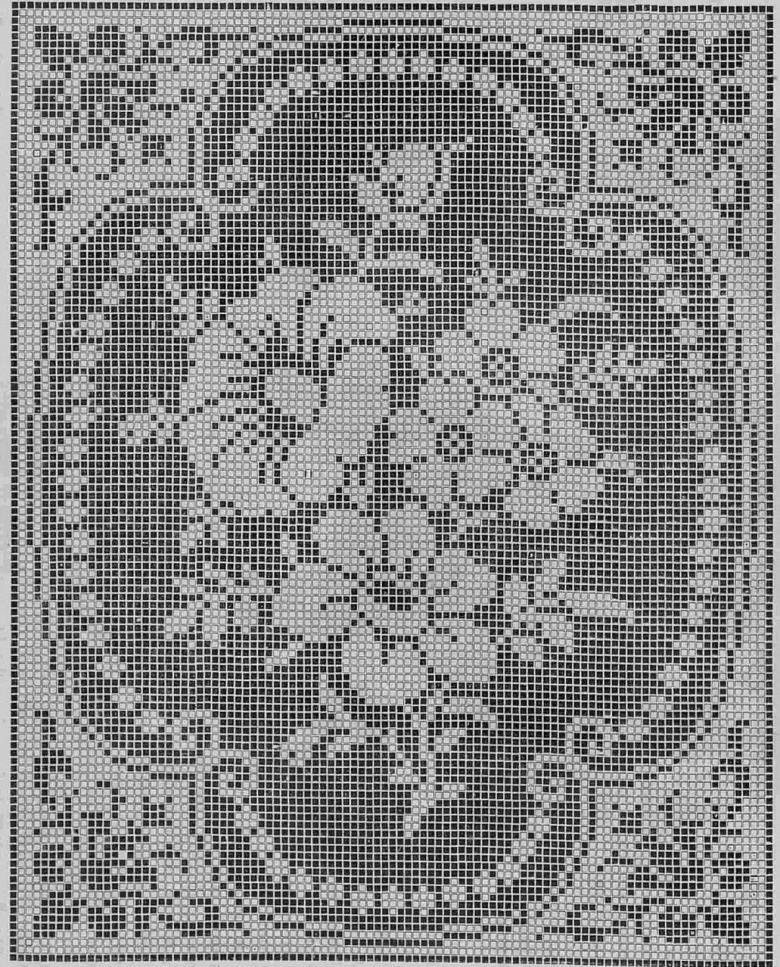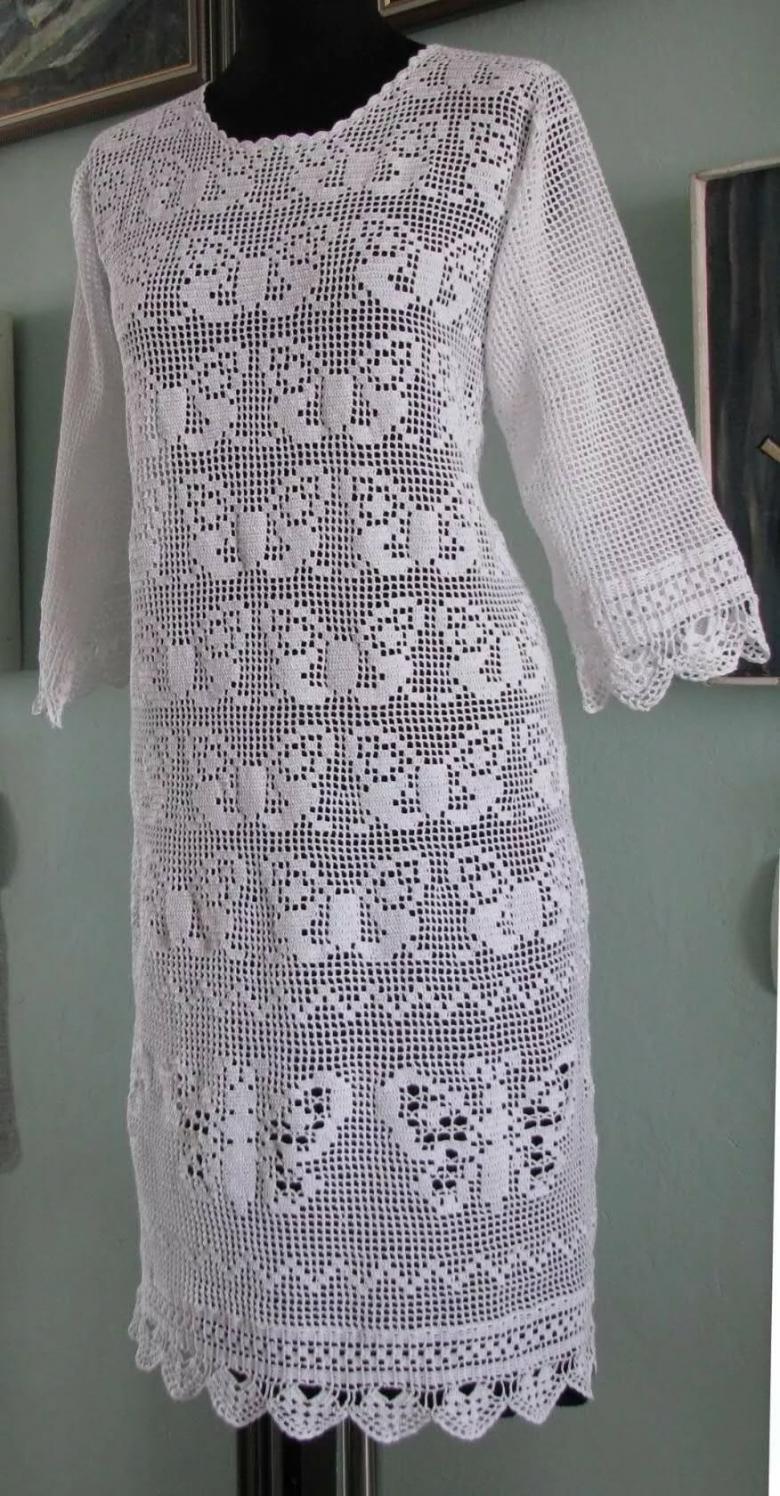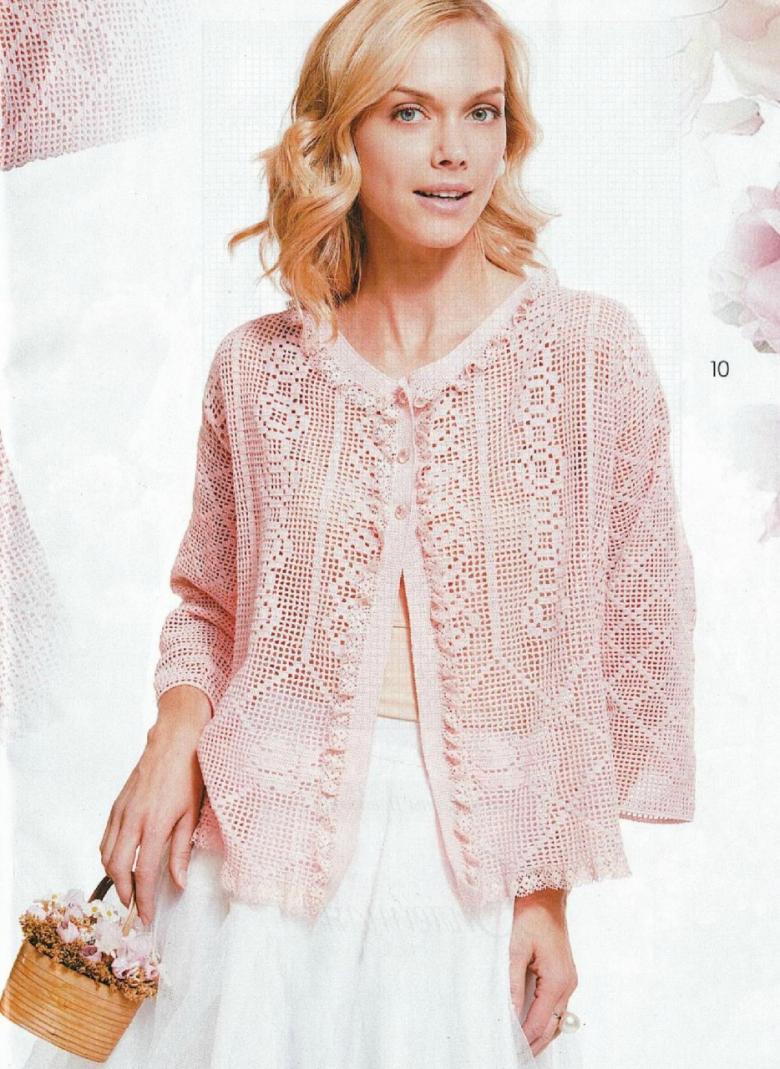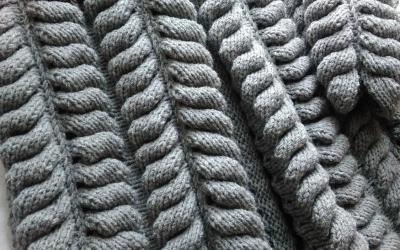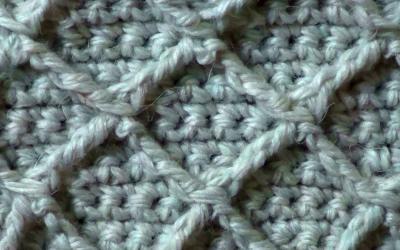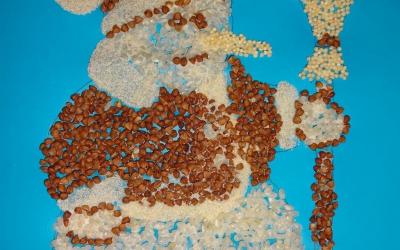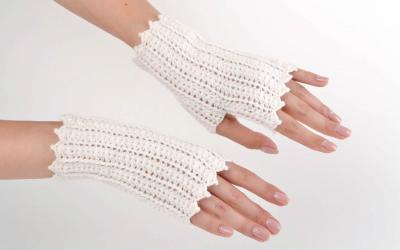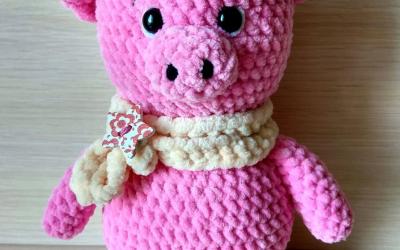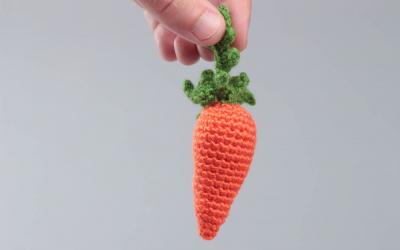Fillet crochet - Features of the technique, step by step master class, useful tips
Fillet knitting is performed by crochet. The basis is a grid of columns with a stitch, interspersed with a chain of air loops. On a grid formed a pattern that resembles a filigree-hypure embroidery.
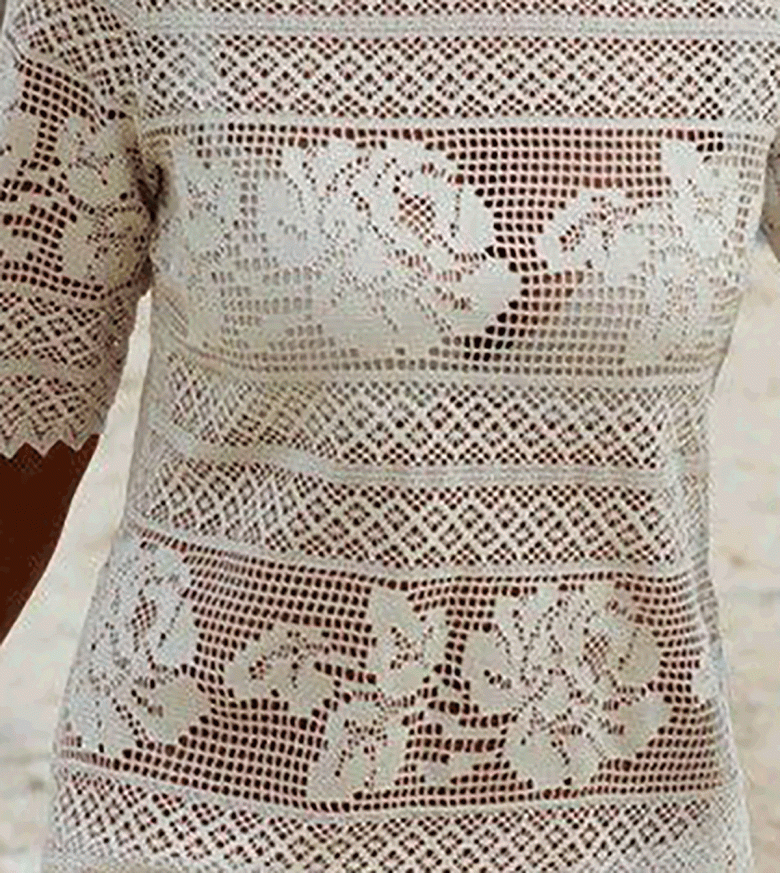
Knitting in the filigree technique is considered a simple activity, but the results are surprising in their originality and imitation of lace. Lace napkins, tablecloths, curtains, vests, blouses, tops and other items of decor and clothing are created in this way.
Yarn and tools
To work in the filleting technique use a yarn with cotton composition: yarn "Snezhinka" Kirov spinning factory, "Mac", "Rose", "Iris" factory Gamma.
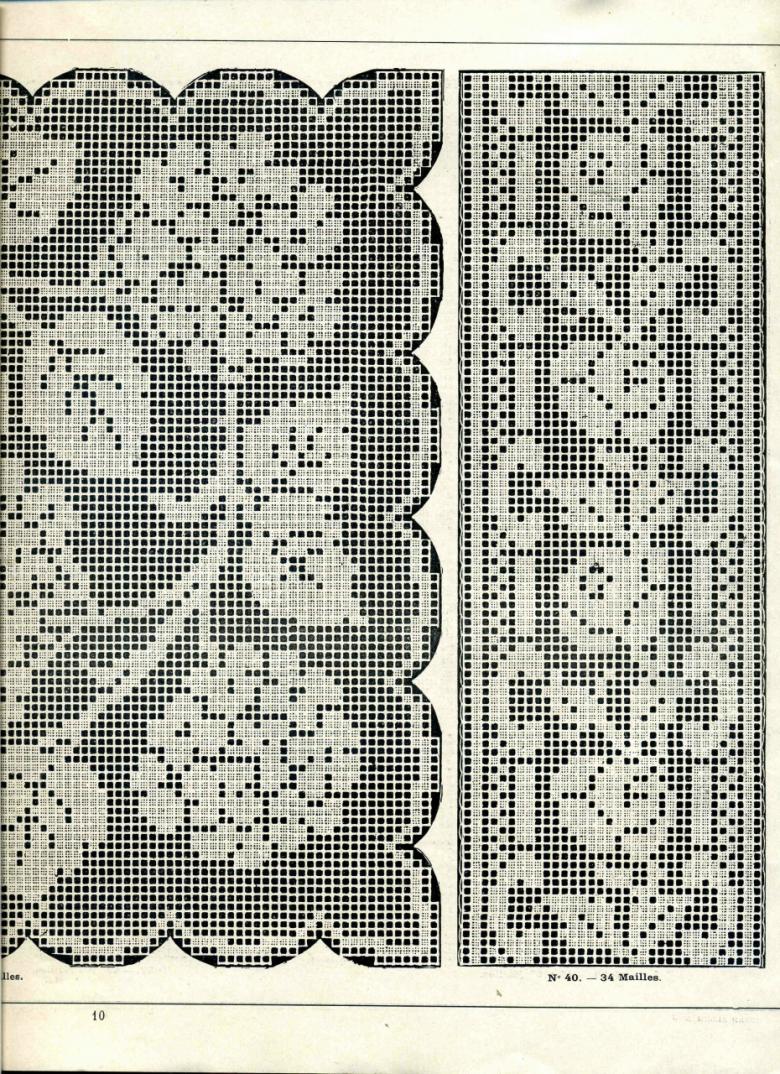
Hook size is selected depending on the thickness of the thread. Most are used hooks of sizes 0.2, 0.5, 0.8, 1.
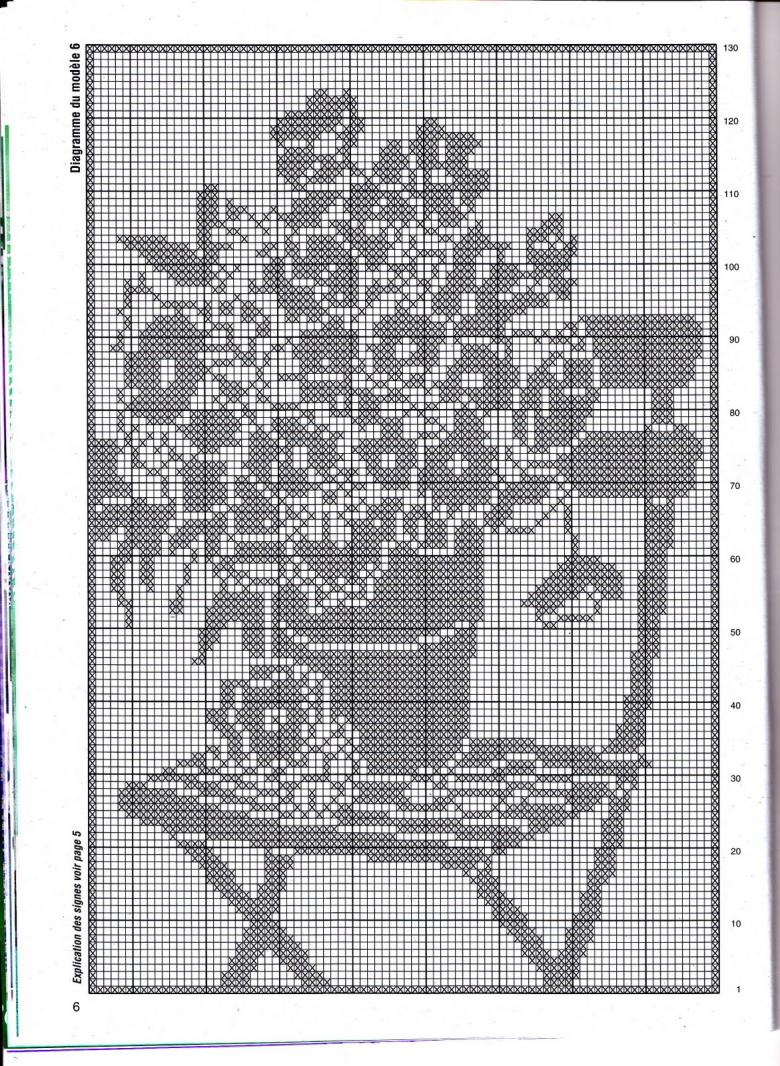
Basics of filleting crochet technique
At the heart of this type of weaving is a specially woven grid. Through the alternation of different techniques, it forms a pattern. Artisans learned how to harmoniously weave into the pattern volumetric elements:
- cones;
- arches, laces;
- tassels;
- fringes, etc.
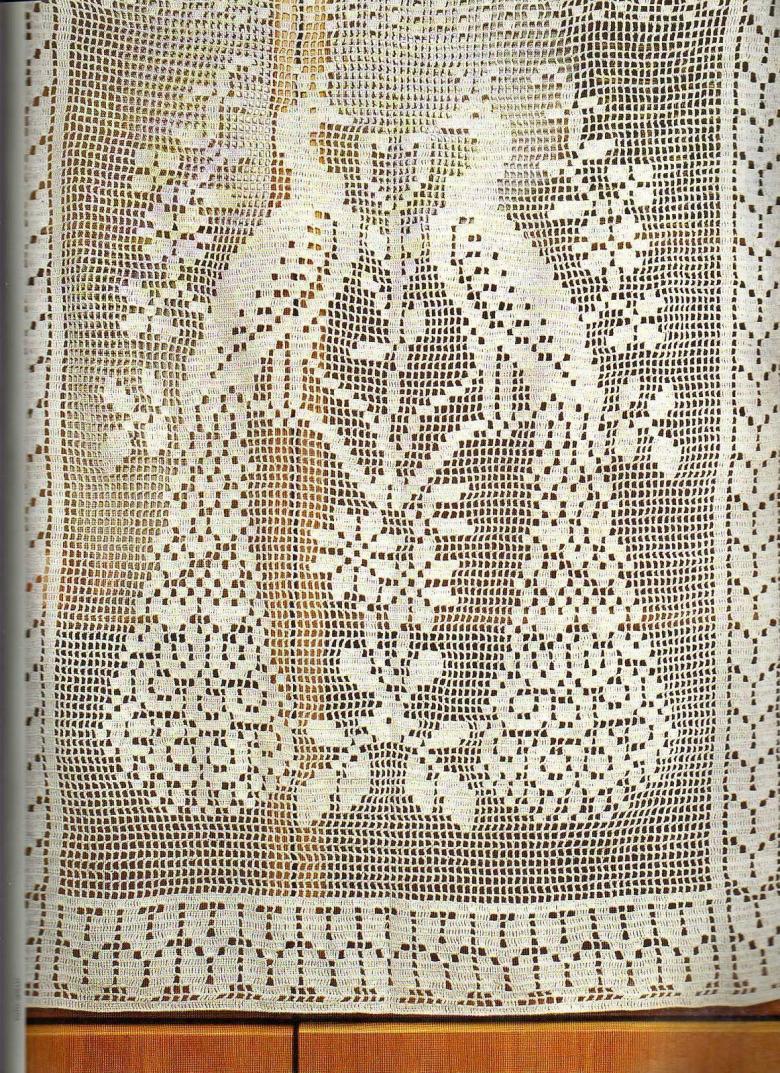
Sections of the fabric, made by filleting technique, are often included in the main product, combining with other types of sewing and knitting. The result is an original piece of clothing or decoration.

Thanks to the abundance of sites on the Internet, dedicated to needlework, you can be inspired by the published photos of things and realize your idea, create a real masterpiece. In addition, this kind of creativity is considered budget-friendly, cotton yarn costs no more than 200 rubles per skein, the length of the yarn, which reaches 400 meters.

The main elements required for "filleting":
- air loop;
- A column with a stitch (SSN).

Filleting mesh. Variant 1
This type of grid is considered the basis of "beading". With it begins any classic product, whether it is a napkin, tablecloth, summer t-shirt or socks with openwork texture.

Master Class:
- Recruit the estimated number of loops in a chain.
- For the lift, make 3 BP.
- Knit in the opposite direction in the next loop from the lift, then 1 CCN, 1 GP and so on to the end of the row.
- In the next row make three loops of lift, over each element of the bottom row knit the same. Above the SSN repeat the SSN, above the GP - the same number of GPs.

Filleting mesh. Variant 2
This type of netting is also considered traditional, differs from the first type by a more sparse arrangement of SSN partitions. This allows you to make a product with a spacious openwork texture. Suitable for knitting summer tops, dressy dresses, festive tablecloths.
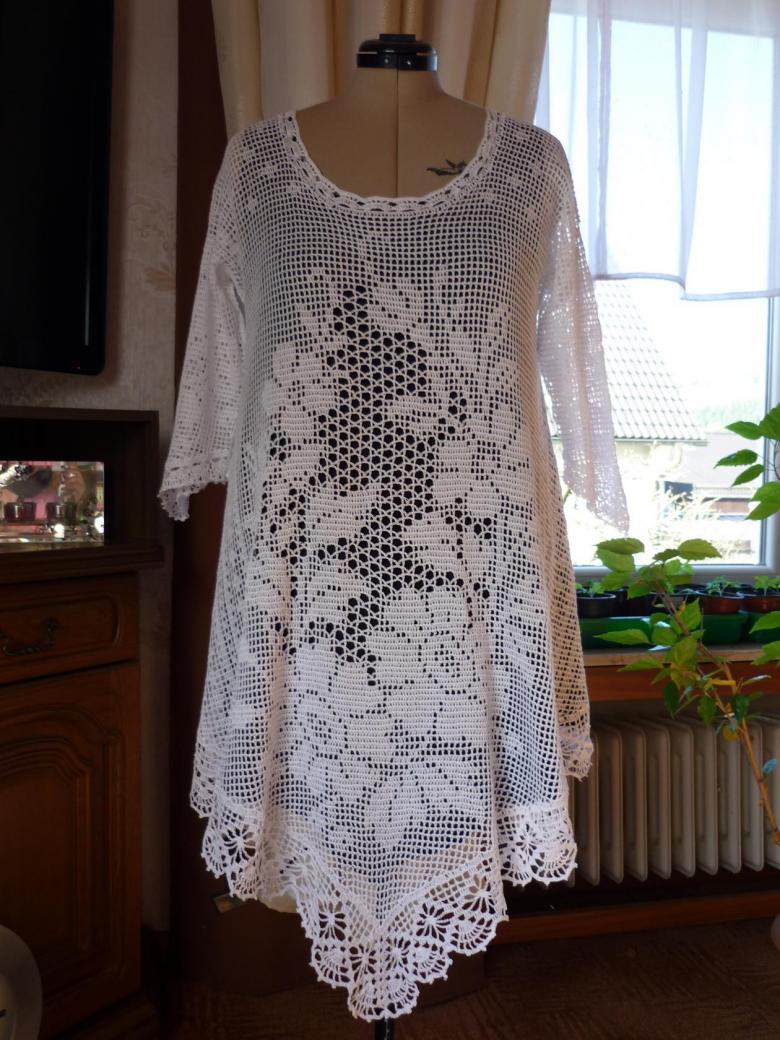
Scheme:
- Tie a chain of the required number of VPs.
- Three BP for the lift and two loops for the arch in the next row.
- Alternate 1CBN, 2BP to the end.
- In the next row above each chain do the same, over the SSN - 1 SSN.
Canvass looks like a lot of cells, located on top of each other.

Filling in the mesh pattern
To make a pattern on the grid, you can use a scheme designed for embroidery on canvas. Canva is similar to "filigree", but its cells are smaller and denser. Schemes published in large quantities on the Internet, on sites with needlework themes.
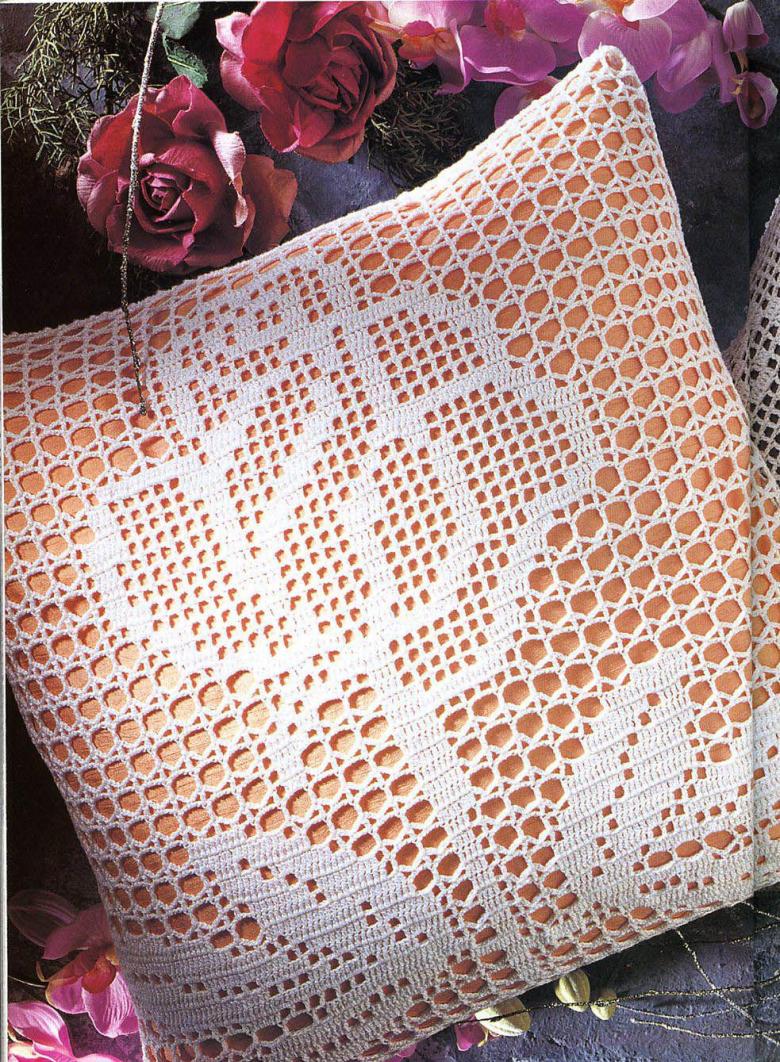
Simple schemes can be developed on their own. To do this, you need to take a notebook in a box and, filling in the squares, draw a figure (circle, heart, oval, star). Active users of office programs can create a scheme of any complexity on the computer, coloring the future figure in given colors.
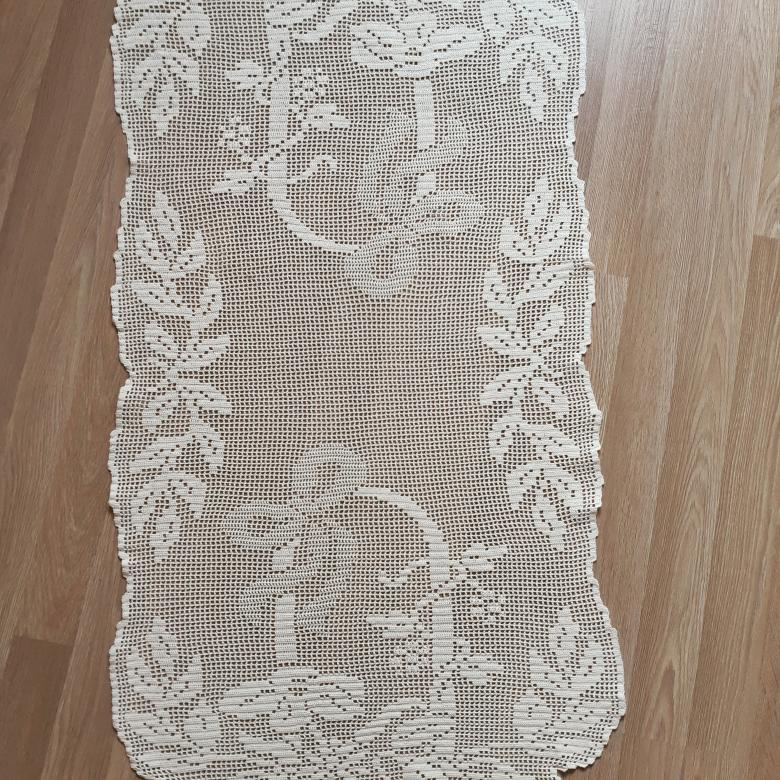
Filling the empty cells is done with the help of columns with a stitch. They are slit for each stitch at the base of the cell. This means that the hook should not be inserted into the buttonhole itself, but capture the bottom sequence of air loops. In this version, the canvas looks neater and flatter.

Figured mesh
Much more interesting looks filigree grid, in which the cell is represented not by flat sides, but by sloping arches. The technique of execution is more complicated than in the traditional version, but on the product looks interesting.

Master class:
- Recruit a chain of BP.
- Make 3 VPs for the lift, 3 VPs, SSN, repeat the sequence until the end of the row.
- In the next row make 3 VP of the lift, 5 VP between the SSN in the previous line.
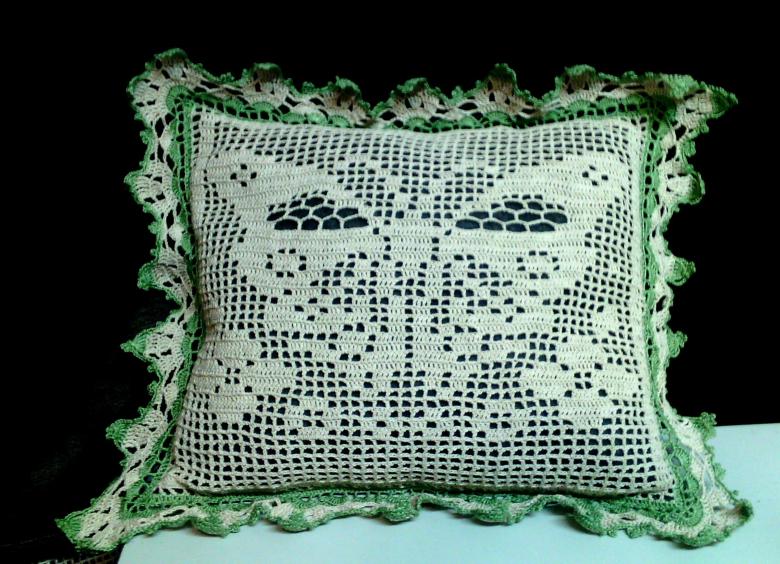
It is important to remember that the number of loops in the initial chain for a particular product may be different from the scheme. In this case, you need to knit a sample of the selected yarn, and carry out the calculation of the loops. The number of air loops in the chain should be divided by three plus one starting loop for the first SSN.
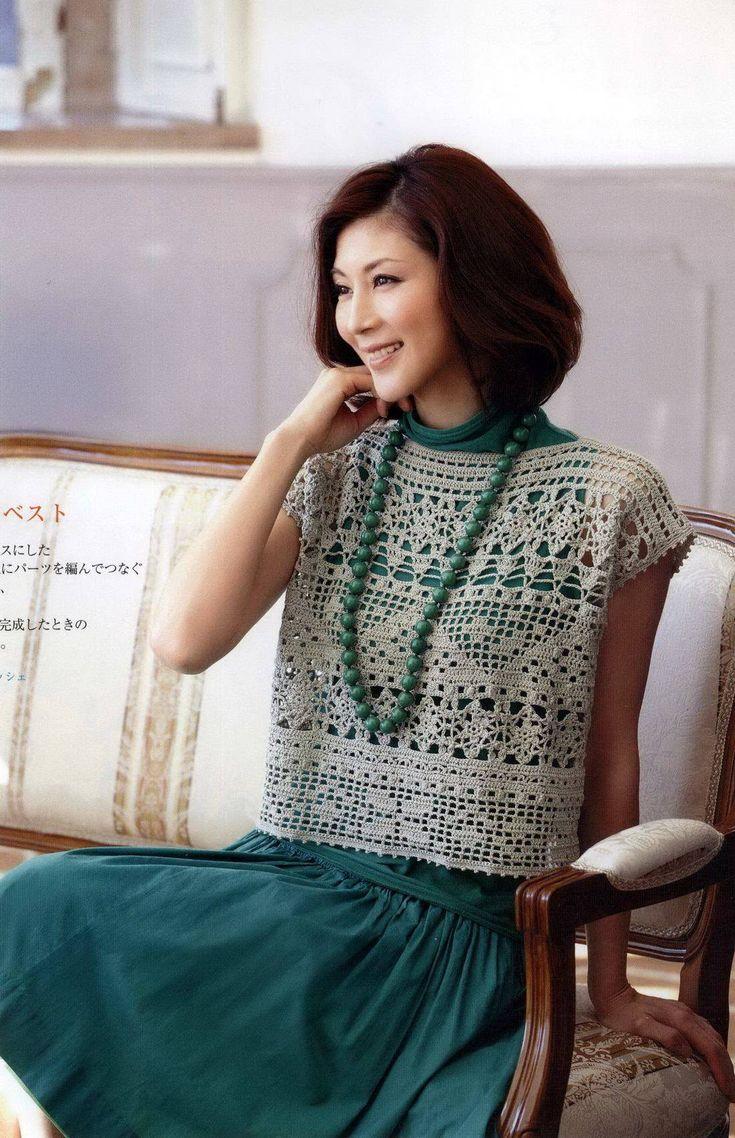
Filleting rules
Despite the outward simplicity of filleting knitting, it has certain rules that allow you to perform a lace imitation. They look like this:
- If the process begins with an empty cell, then a couple of VPs need to be tied extra and introduce the hook into the third VP.
- If there is a filled cell at the beginning of the row, then the SSN to do in the fifth element.
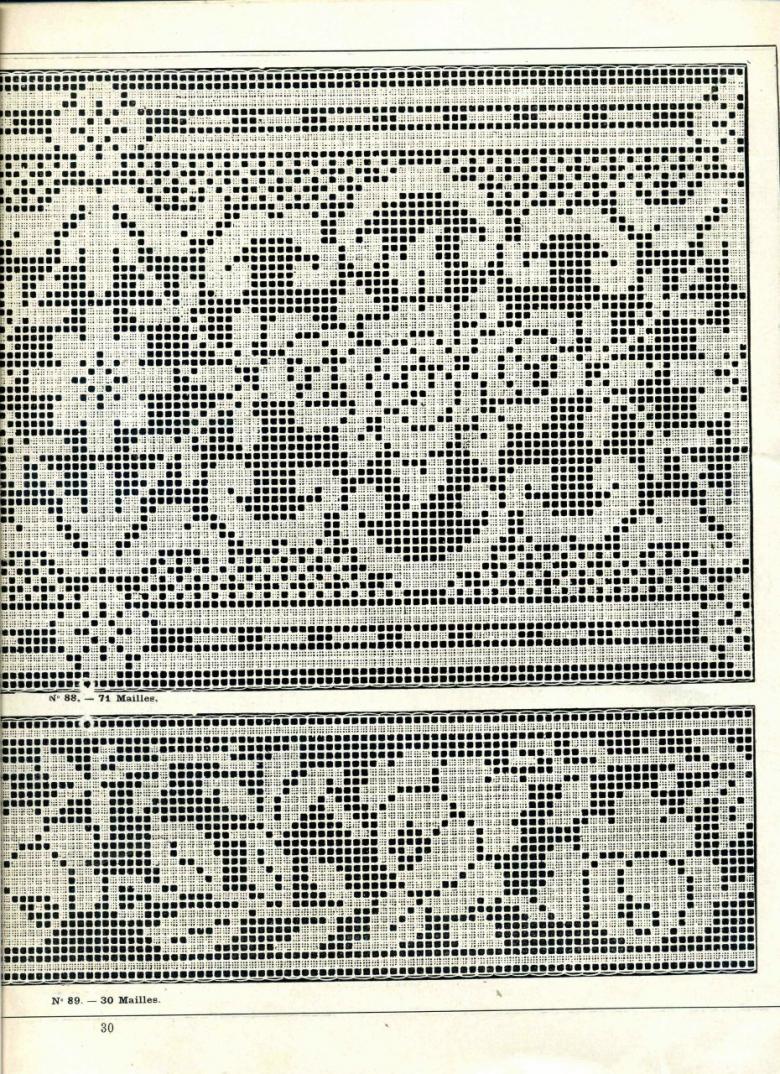
To more easily master these rules, you should be guided by the previous row - if the bottom of the arch, then the top will be a filled cell and vice versa.
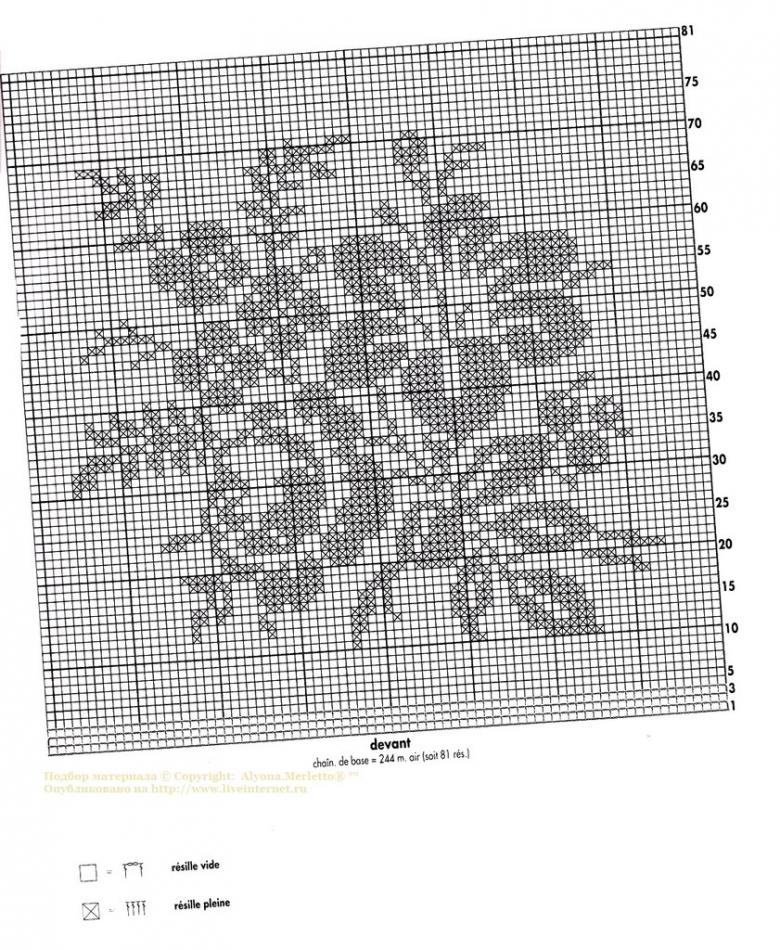
Deduction rules
On the "fileyka" often knit articles of clothing. Details, for example, a summer tank top does not look like a rectangular canvas. In the armholes, it is necessary to make a cut so that the model fits well on the body. Deduction is made by cancelling the whole cell.
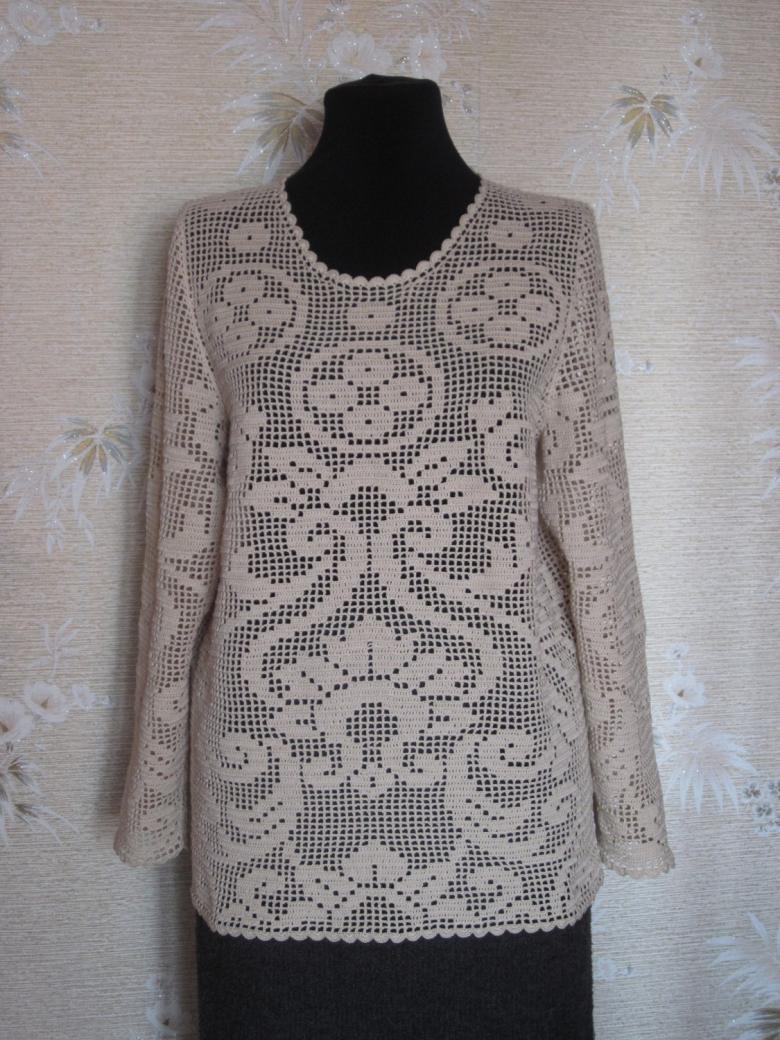
Deductions are made as follows:
- If there are three VPs at the base of the cage, then at the beginning of the line instead, three connecting columns are knit along the chain to the next cage.
- At the end of the row, simply leave out one cell, starting the next row with the penultimate element.
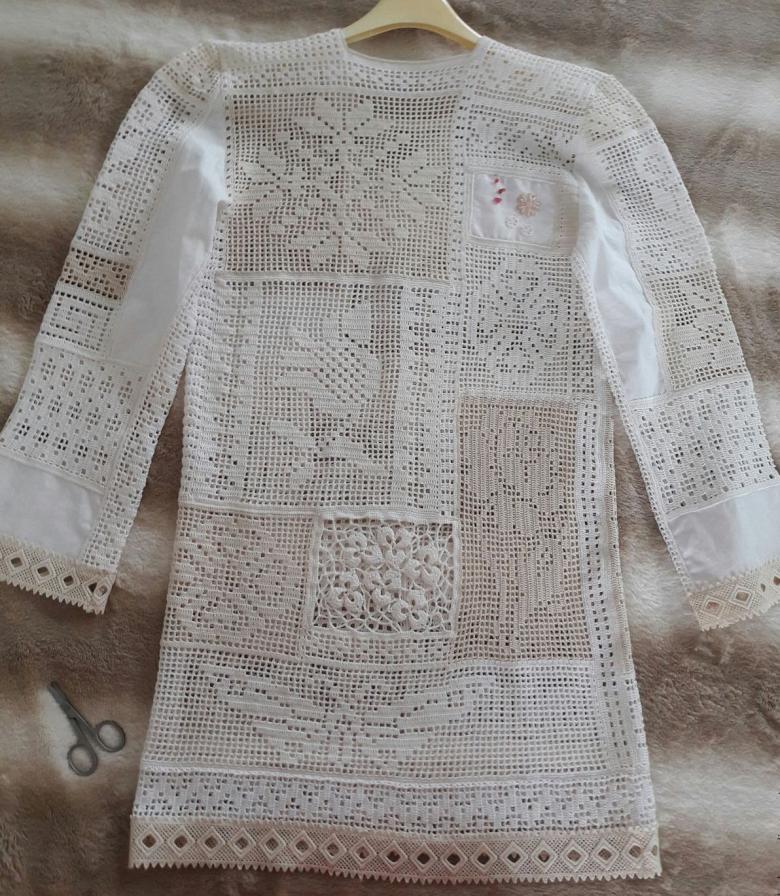
Addition rules
To increase the size of the fabric on the edges perform additions. Additions can be made in the form of one, two or more cells, depending on the requirements for the shape of the product.
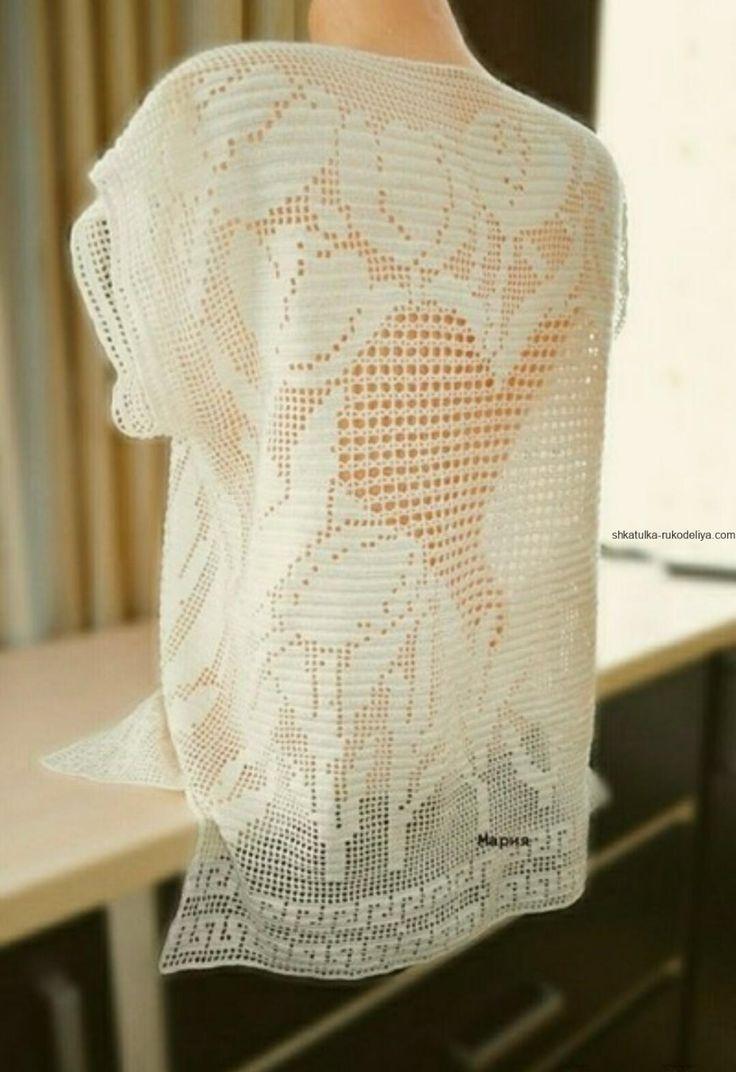
The order of the additions:
- At the beginning of the row, make a chain in which the number of air loops is enough to perform the wall, the roof of the cell.
- Use the CBN to close the element in the loop of the previous row, in which the CBN is located.
If you need to lengthen the fabric with a filled cell, then in each of its compound loops need to knit CBN.

Volumetric knitting on a filleting grid
"Filleting" differs from other knitting techniques in that it allows you to give the product a 3D effect. This is made possible by knitting four I-CHNs under each side of the mesh. The result is waves that frame the mesh in different directions, forming an original three-dimensional pattern or simply filling in the fabric.
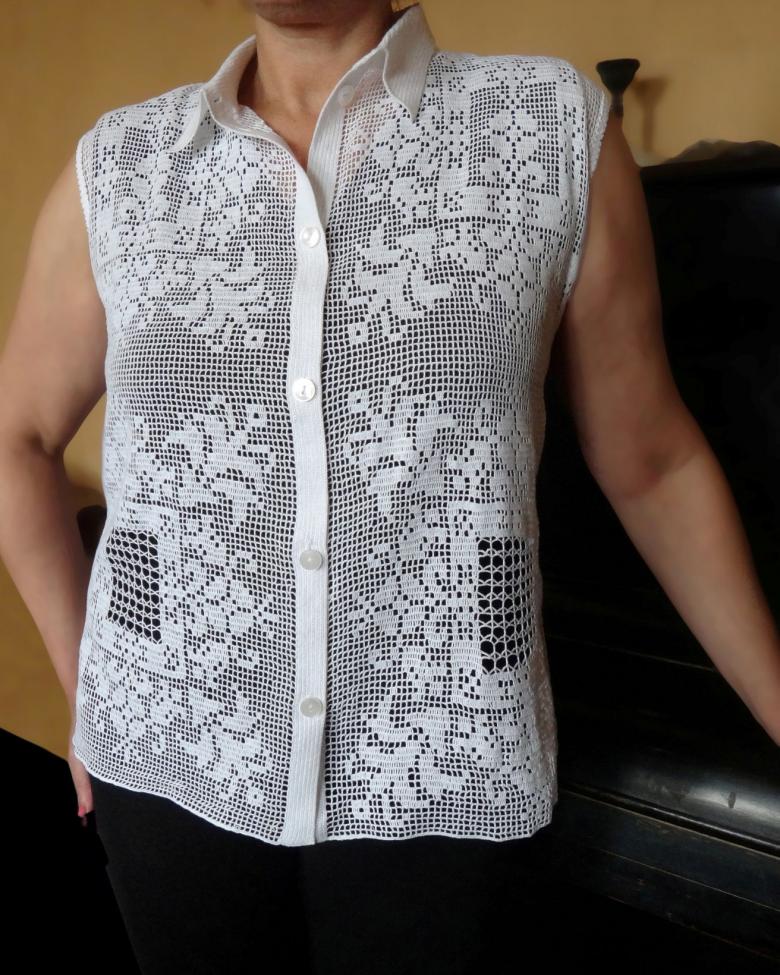
Especially interesting look fancy ornaments made with different colors of yarn. To implement creative ideas, needlewomen use floral motifs, Greek-style zigzags, geometric shapes. To weave a mesh base take not a cotton thin yarn, but a thick strong yarn. After all, it will hold a lot of knitted ruffles, which together give a weighty volume.
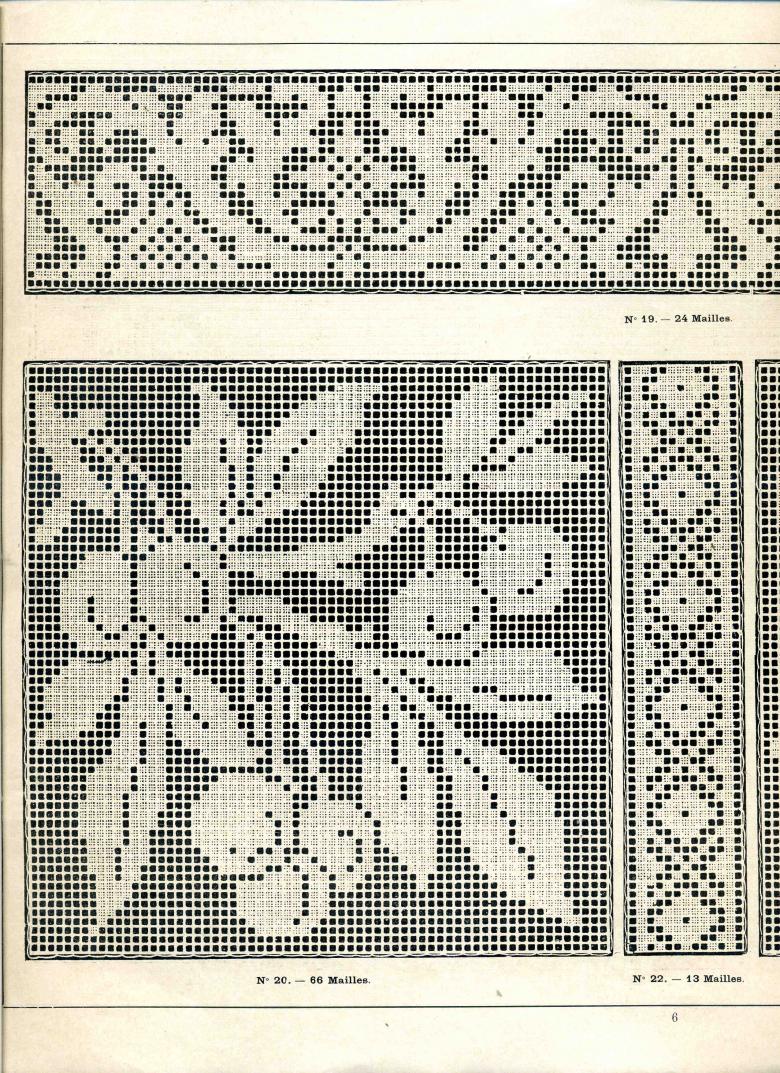
Knitting in the filigree technique is considered easy, but requires certain skills of careful execution of the elements. As a result of the work you get amazing products that mimic lace. Details made by "filleting", decorate tablecloths, collars and sleeves of blouses, can be found in children's plaids, decorative items.

